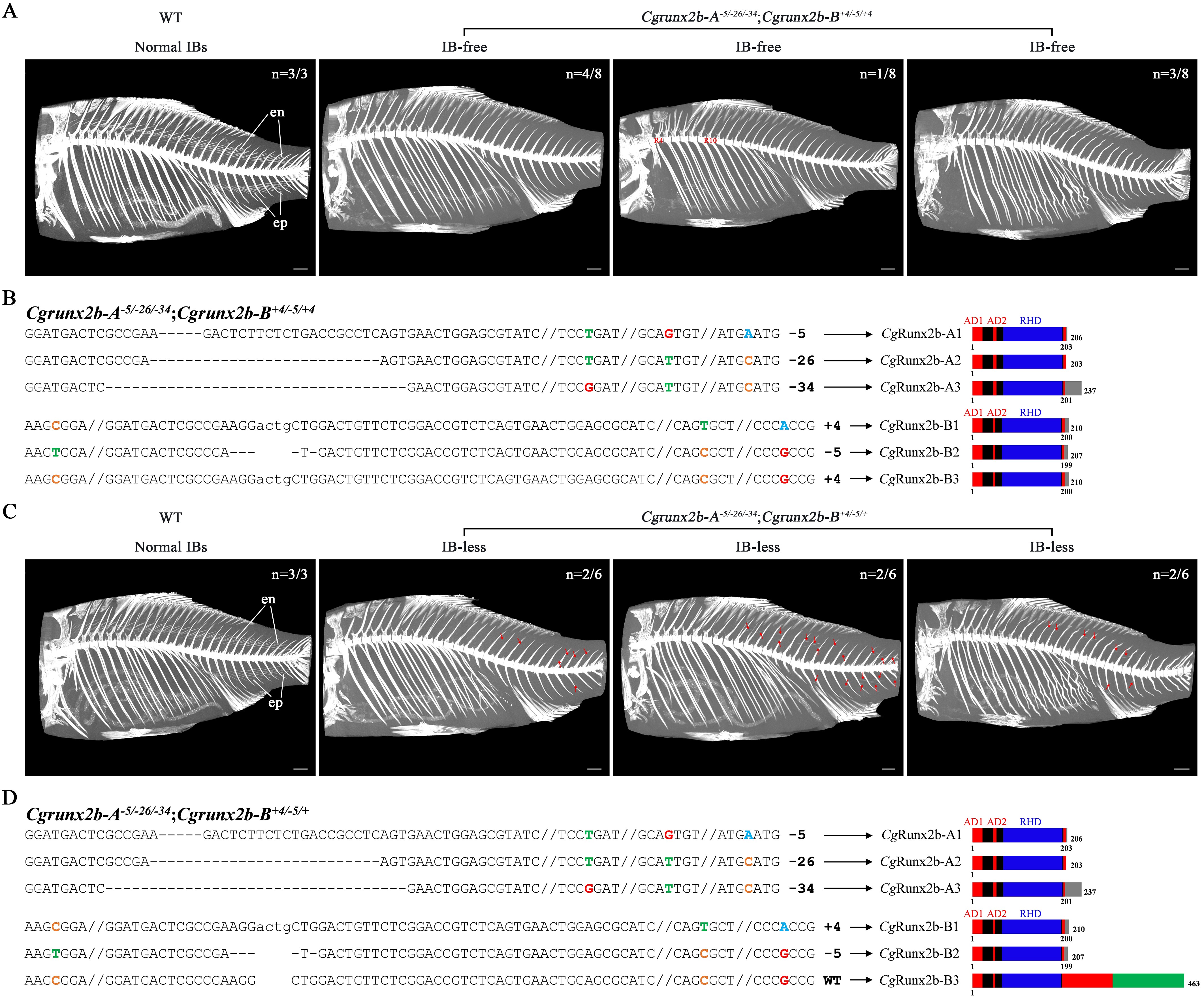Highlights
Researches Create Intermuscular Bone-free Mutants in Amphitriploid Gibel Carp
Intermuscular bones (IBs) are small spicule-like bones locating in the muscle fillet of teleost. They are found to be ubiquitous in most of freshwater fishes, especially in farmed carps, which causes trouble for consumers. Therefore, the creation of IB-free mutants to abolish the potential injuries risk to consumers has become a hot issue in fish genetic breeding.
Gibel carp (Carassius gibelio) is an important aquaculture species in China, but it contains approximately 80 IBs and the injuries to threats have strongly restricted its industry development. In the past two years, a research group led by Prof. GUI Jianfang from the Institute of Hydrobiology (IHB) of the Chinese Academy of Sciences (CAS) has revealed that the gibel carp is amphitriploid (AAABBB) by comparative genome analysis, which means it contains two triploid sets of chromosomes, and thus developed an efficient approach to rapidly generate mutants by gene editing in amphitriploid gibel carp and amphidiploid goldfish (C. auratus) (AABB).
Based on these breakthroughs, Prof. Gui’s team has developed a precision breeding biotechnology for polyploid fish and created IB-free mutants in amphitriploid gibel carp in collaboration with Prof. GAO Zexia from Huazhong Agricultural University, who has identified runx2b as a decisive player of IBs in zebrafish. This study was published in Aquaculture.
The researchers first identified two homeologs of runx2b (Cgrunx2b-A and Cgrunx2b-B) and found that each of them possessed three almost identical alleles in gibel carp.
The researchers then traced the IB ossification process in gibel carp. Alizarin red S staining showed that gibel carp IB began to ossify in the tail area at 14 approximately days post hatching and developed from the posterior to the anterior regions. By comparing the differential expression of Cgrunx2b-A and Cgrunx2b-B, the researchers found that they displayed similar expression pattern and differential expression level during IB development.
Using CRISPR/Cas9, the researchers have successfully edited CgRunx2b-A and CgRunx2b-B singly or simultaneously, and found that single loss of CgRunx2b-A or CgRunx2b-B function is unable to affect normal IB development, but simultaneous disruption of CgRunx2b-A and CgRunx2b-B leads to complete loss of IBs. Through the above study, they have obtained 291 gibel carp mutants with completely lost IBs.
These findings indicate that CgRunx2b-A and CgRunx2b-B cooperatively regulate IB development. Importantly, they have created IB-free mutants, which laid the foundation for breeding IB-free strains of gibel carp.
In the next step, the detailed biological and economic traits, including growth and development, swimming performance, bone density, disease resistance, food competitiveness and muscle nutrient content, need to be further compared between WT and IB-free gibel carp strain under rigorous raising and other experiment conditions.

Intermuscular bones phenotypes and mutated genotypes in Cgrunx2b-A and Cgrunx2b-B mutant of gibel carp (Image by IHB)
(Editor: MA Yun)